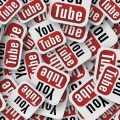Facebook open graph: what to know about it?

Have you wondered why other articles seem to perform well on social media sites like Facebook, Twitter, LinkedIn, while yours barely gets views? The secret to their success is the open graph debugger—an API tool developed by Facebook. To use it, you must first understand some things about the API tool.
What is an open graph debugger?
The open graph debugger is a tool that was developed by Facebook in 2010 to widespread success. It uses open graph meta tags, which are snippets of code that control how URLs are displayed when shared on social media. Since its conception, it has not only been used to debug Facebook open graph, but was adopted for use by other social media sites such as Twitter and LinkedIn.
According to Facebook: “it’s important that you mark up your website with Open Graph tags to take control over how your content appears on Facebook. For your website to be shared correctly by our crawler, your server must also use the gzip and deflate encodings.”
![]()
Why is it important to control how your URL appears on social media feeds?
Research carried out in 2018 showed that social media users are more likely to click on a link if the link has a catchy caption, an intriguing thumbnail, and a fast website open rate—attributes that open meta tags control.
Applying open meta tags to your articles is important, as:
- open meta tags make your content “eye-catching” when they appear on users’ feeds.
- the meta tags tell people what your content is about at a glance, as they make sure your caption and links are not broken.
- the meta tags also help the crawlers of Facebook and other social media sites understand what the content is about, which will in turn improve your SEO visibility on the social media sites.
Improving your SEO visibility is a guaranteed way of ensuring your article appears at the top when users search for content related to yours. Also, pages that get lots of traffic are more likely to be shared by users.
How to use Facebook open graph?
The open graph tags are easy to understand and don’t require deep technical knowledge of the code. Facebook lists 17 OG tags in their official documentation, but the most important tags to understand are:
The og: title
This is for the title of your article.
The og: description
This usually contains a brief description of the content, usually between 2 and 4 sentences. It will appear directly under the title of your article.
The og: image
This contains the URL of the image that appears when you share your article on social media.
Other open graph tags that help improve your content are the og: type, the og: video, and the og: locale.
Utilizing Open graph tags on the content, you share to social media sites will drastically increase the number of views and clicks each of your articles receives. They are also easy to learn and do not require deep technical knowledge of SEO or HTML.
Don’t know where to begin, or still unsure about using the tags in your content? Let us know, and we will answer all your questions.




